In Paul’s Shoes – Touring Damascus
By: Habeeb Salloum/Arab America Contributing Writer
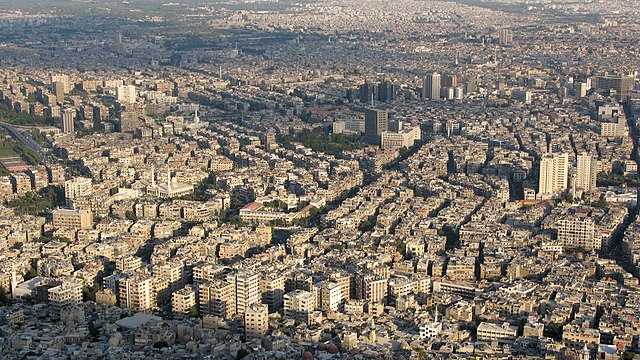
Habeeb Salloum follows the steps of Saint Paul in Damascus a few years before the terrorist supported destructive war.
Souk alHamidiyeh, Damascus’s main bazaar, was milling with humanity as I walked with a friend who had recently graduated from the University of Damascus. We made our way slowly examining the endless shops displaying their superb artisan products for which the city is famous. He pointed out with pride the importance of his city and the significance it has held since time immemorial. I felt elated and content, for I was being guided by a knowledgeable Damascene Christian whose forefathers had lived in Damascus since the first Christian community had been established a few years after Christ’s crucifixion.
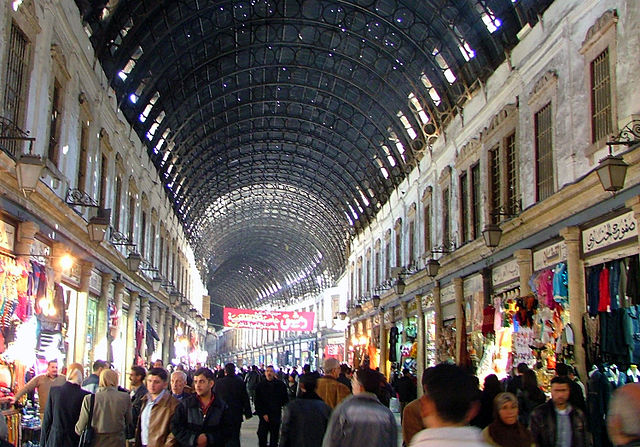
Passing by a number of columns from the Roman Temple of Jupiter we reached the Umayyad Mosque the pride of Damascus. Built in 705 A.D. on the location of a basilica, which itself was erected on the ruins of Temple of Jupiter, the mosque is a masterpiece of Arab/Islamic architecture.
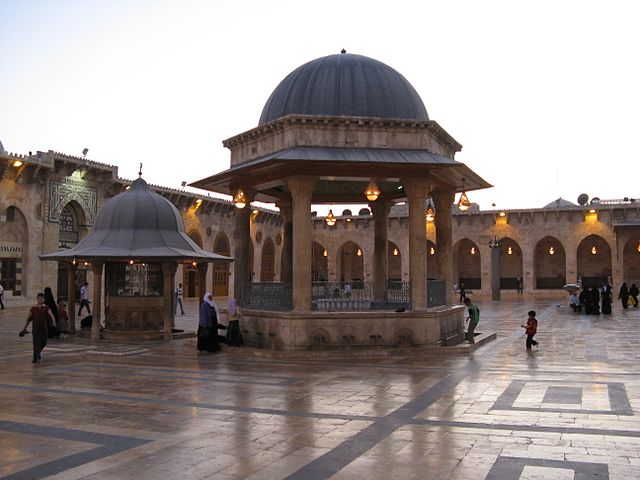
From the finely proportioned courtyard we entered the richly carpeted prayer hall with its tiered rows of arches resting on Corinthian columns. In the heart of this huge chamber, we stopped to examine the domed mausoleum of John the Baptist, known to the Muslims as the Prophet Yahya. It is the focal point of the entire mosque, and of our visit.
Writers have called it a fine example of Islamic art and it is claimed that it contains, in a silver coffer, the head of John the Baptist. Venerated by both Christians and Muslims, the tomb has been a magnet for endless pilgrims since early Islamic times. Christians crossing themselves and Muslims reading the Qur’an intermix with each other – a beautiful example of religious harmony.
We left the Great Mosque, which is in the process of a restoration on both the outside and inside, then made our way to the Street Called Straight which has been renowned since Biblical times. At this famous street, now named Souk al-Taweel or Madhat Pasha, we turned toward Bab Sharqi (East Gate) a 3rd century Roman gate. Known as Via Recta in the days of Rome, it is the axis of old Damascus and the street celebrated in the conversion of Saint Paul to Christianity.
On his way to Damascus to persecute the city’s early Christians, the Roman Saul of Tarsus was blinded by a light from heaven atop a hill called Kawkab (Celestial Light). There, 10 km south of Damascus and where Christ is said to have spoke to him, a shrine now stands.
His companions, following the direction of the message from Christ, led him by hand to the Street Called Straight on which was located the House of Judas. According to the story, God had told the devout Christian Ananias to go to this building and enquire about one called Saul. When Ananias saw the blinded man, he placed his hand on Saul’s shoulder and is reported to have said, “Jesus…hath sent me, that thou mightest receive thy sight, and be filled with the Holy Ghost”. Saul’s vision returned and he was baptized Paul. His conversion from an enemy of the Christian believers to one of their greatest defenders has ever since been equated to a dramatic change of faith.
We moved along the street where Saint Paul once trod, now filled with small shops catering mostly to Bedouins and peasants. We stopped at one of the stores to buy some of the colourful traditional Syrian clothing. Leaving our happy merchant, we made our way to the old Christian quarter whose heart is Bab
Touma (Saint Thomas’s Gate). In the medieval ages all the followers of Christ lived in this part of Damascus. Today, the city’s 200,000 or so Christians are scattered throughout Damascus.
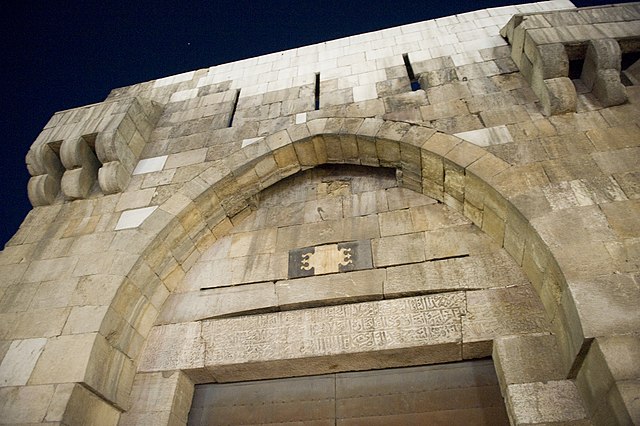
Strolling leisurely on past a restored Roman arch, we reached Bab Sharqi at the end of the Street Called Straight. From this restored imposing structure, through which the Muslims first entered Damascus in 636 A.D., we followed the ancient walls to the left. Passing workshops where much of Syria’s exquisite inlaid furniture and rich silks are made, and in a few minutes reached the underground Chapel of Saint Ananias, called by the Arabs Kanissat Hananiyah.
About 5 metres below ground, the crypt is presumed to be the cellar of the House of Ananias, but may indeed be a part of his home, built at the level of the Roman street. A number of historians have also suggested that the chapel is what remains of a large Byzantine church built where the home of Ananias once stood.
Restored many times, it is the earliest Christian house of worship to survive in the city. A simple structure, consisting of two small rooms with bare stone walls, it houses only an altar, some icons and a few pews. It represents the simplicity of the initial Christians and has one of the earliest histories of any church still standing.
We stayed for a while, watching mostly women worshippers praying to Saint Ananias, the first bishop of Damascus, many with tears in their eyes. The sunlight coming through two small openings in the vaulted roof shining on the faces of the people in prayer gave the place a haunting religious aura. My friend pointed out that many of the women were Muslim. Like a number of other Christian religious figures, Saint Ananias has been for many centuries revered by both faiths.
From the church we walked back to Bab Sharqi, then on about 400 meters further south along the outside of the wall to Bab Keissan (Keissan Gate) or, as it is often referred to, ‘Saint Paul’s Window’. Legend has it that from this gateway, while fleeing from the Roman soldiers trying to kill him, Saint Paul was let down at night in a basket by his disciples. An early church, now in ruins, once stood near this gate where it is believed the basket landed.
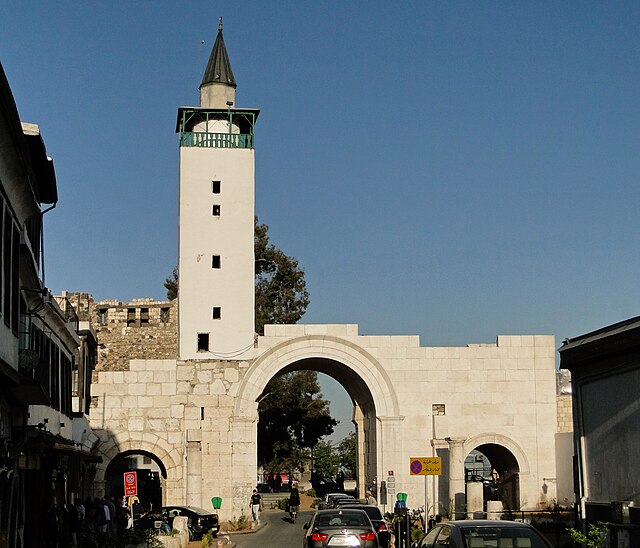
Many of the city’s Christians believe that it is the same gate, still standing from the days of Saint Paul. However, it has been rebuilt many times since the Roman centuries. Turkish in style, it was last rebuilt by the Ottomans during their long occupation of Syria.
Back in Bab Touma, we stopped to explore the Kanissat Mariyamiyah (Saint Mary Cathedral), part of the Orthodox Patriarchate of Syria and Lebanon. The Patriarchate was located in Antioch until the French ceded that part of Syria, in 1939, to Turkey. The Antiochian Orthodox Church, formerly the Greek Orthodox Church of Syria, representing about half of Syria’s one million Christians, now has its headquarters in Damascus. It is the main Christian sect remaining from the 300 years of Christian Syria and the 400 years when Christians under Muslim rule formed the majority of the inhabitants.
In today’s Syria, besides the Orthodox, there are a myriad of Christian sects from Jacobites and Latin Catholics to Protestants and countless others. They live mostly in Damascus, Aleppo and Homs, forming about 6 percent of the population, but they exercise an influence far greater.
The country’s innumerable churches, convents, monasteries and shrines have survived the ages remarkably unscathed. Christian religious edifices have existed in peace for hundreds of years next door to mosques. Venerated by both Christians and Muslims, the great Convent of Saydnaya 37 km north of Damascus and the historic churches of Maloula, an Aramaic speaking town 60 km from Damascus, have flourished throughout the Muslim centuries.
At the Saint Mary Cathedral, the largest centre of Christian worship in Syria, our walk over the footsteps of Saint Paul came to an end. We sat and relaxed, admiring the church’s dazzling white marble walls and floors that contrasted so vividly with the bareness of Saint Ananias’s Chapel. Like most other places around the globe, Christianity in Saint Paul’s city had evolved from simple to elaborate.
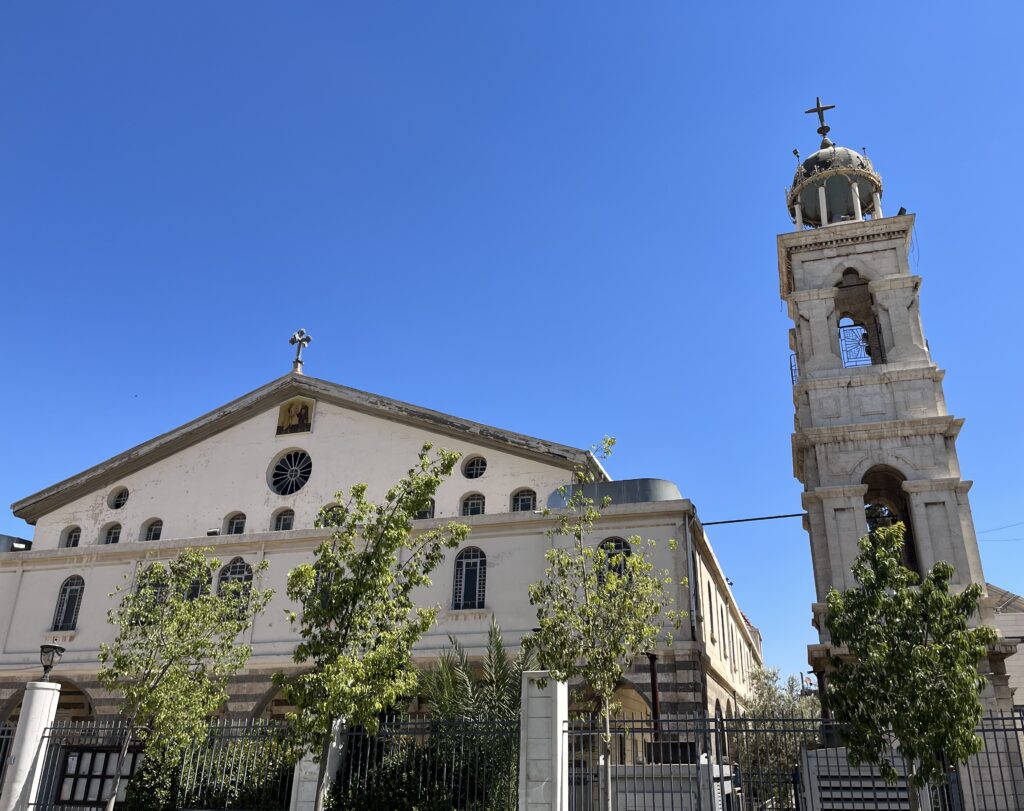
Christianity’s historic and holy sites are alive in modern day Damascus. For those with faith or for those who simply revel in what once was, Syria and its capital city have much to offer. No other city shares such a history. This is the beauty of Damascus – a very harmonious city.


